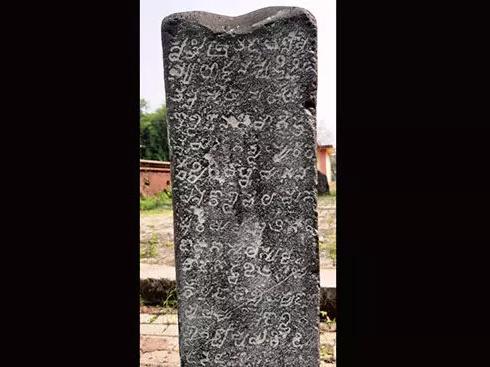10th century Kadamba inscription written in Kannada, Sanskrit found in Goa (The Hindu)

- 05 Jan 2024
Why is it in the News?
An inscription written in Kannada and Sanskrit and said to be of 10th century A.D. Kadamba period has been discovered in the Mahadeva temple at Cacoda in southern Goa.
About the Kadamba Inscription:
- Discovery and Study of the Inscription: The inscription illuminates the Kadamba period in Goa, commencing with the auspicious phrase 'Be it well' (Swasthi Shri).
- It was discovered between the temples of Mahadev and Sateri-Betal at Cacoda in Goa.
- Epigraphic Details: It chronicles the story of Gundayya, Talara Nevayya's son, who vowed to fulfill his father's desire by capturing a Gopura in the port of Goa.
- The inscription is engraved in Kannada and Nagari characters.
- Its literary style mirrors the Talangre inscription of Jayasimha I from the same period.
- The deciphering of the Kadamba stone inscription has brought to light its historical and socio-cultural importance.
- Historical Narrative: The Kadambas of Goa served as subordinates to the Chalukyas.
- Kadamba Shasthadeva, appointed as Mahamandaleshwara of Goa by Chalukyan emperor Tailapa II, played a key role in overthrowing the Rashtrakutas.
- In 960 A.D., Kadamba Shasthadeva conquered Chandavara and the port of Gopakapattana (present Goa).
- Gundayya, Talara Nevayya's son, actively participated in the battle, successfully securing the port but sacrificing his own life.
- To commemorate his son's heroic fight, Talara Nevayya erected a memorial stone with the inscription in the Mahadev temple at Cacoda.
- Socio-cultural Importance: Cacora village, situated near navigable waterways, establishes connections to the Upper Ghat region through the ancient route of Diggi ghat leading to Karnataka.
- Currently a census town under the Municipality of Curchorem Cacora in Goa, Cacoda hosts the Mahadev temple with its affiliated deities, showcasing the cultural richness and historical significance of the area.
